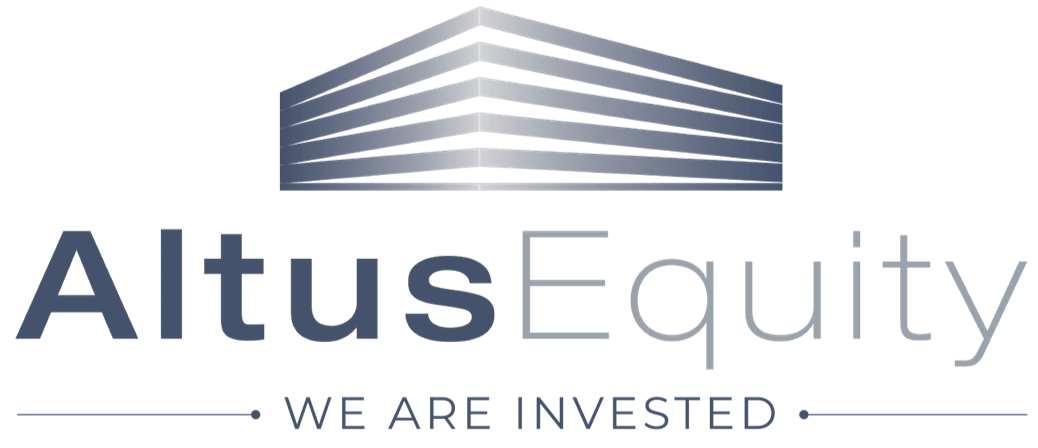I really struggled in writing this Insight-not for lack of content, but rather because the content I want to share is still largely a theory in my own mind (and within Altus conversations), not yet fully formed or defined, and certainly not well described—but with a rapidly growing conviction.
The Great Recession inflicted an incredible amount of pain on real estate investors—especially those who, like many today, lacked long-term fixed-rate debt supported by in-place cash flow. Even many of those who did ended up on the wrong side of the equation when commercial tenants closed up shop. As the saying goes, “The cure for high prices is high prices,” and the high prices pre-recession overcorrected into really low prices post-crash.
Fear among investors led to a constriction of investment dollars—a classic decrease in supply (of investment dollars) that resulted in a substantial decrease in price (of the real estate). This created wide-open opportunities for those able to see through the fear and take action.
By the end of 2008, my net worth was more negative than it had ever been positive. But after running my own company since 2002, I was largely unemployable—especially for any sort of job that was hiring in 2008-2009 and able to create the kind of revenue I needed to keep my substantial debt serviced. More broadly, late 2008 and into 2009 was a period of substantial and pervasive fear throughout the economy. Despite our human propensity for confirmation bias, many of us can still close our eyes and feel the intense negativity of the day.
It was in that environment—and without much else in the way of options for making money, I purchased my first property coming off the bottom in November of 2008. It was a big win. I purchased another one, and then another. The price collapse created massive opportunity, even within that part of the market cycle. But the real returns from investments made in that early post-GFC (Great Financial Crisis) period were the appreciation that was to come over the next decade. This was certainly true in housing, with fifteen-year appreciation from 2009 of 105%, and multifamily appreciation of 133% from trough through to the 2022 peak.1 Of note: using fairly conservative 65% leverage, that results in a 400% appreciation on equity over the time period, which is completely distinct from any returns via cash flow or loan amortization.
These are really strong returns.
Our investments performed exceptionally well during this time period. We were incredibly tight in our underwriting, and our discipline in ensuring the purchases were within the bounds of that discipline drove more than one broker to drink. Each and every underwriting was done based on the then-current rents and values, without taking into account the market recovery that we fully believed in but didn’t feel confident projecting because the market fear was still palpable, and no one ever really knows the future.
But, that discipline, while creating wins in a micro sense, caused us to miss the much broader investment returns that would have been available to us and our investors had we spent more time accumulating good deals than being overly focused on finding great deals. At the end of the day, the vast majority of the returns came from the cash flow and long-term appreciation rather than the forced appreciation we were able to create immediately after purchase. We were 100% confident values were going to recover and 100% confident that rents would increase, but in being overly conservative we missed out on the broader truth—once demand again outweighed supply, prices (measured by both sales prices and rents) would increase rapidly until they were high enough for new supply to justify being brought to the market.
Now here we are in 2025, and the situation is very much like it was in 2008 and 2009. While absent from the consciousness of the broader society, many parts of the investment real estate world—especially multifamily—are in the midst of a substantial crisis. Which, as we’ve been preaching at Altus for the past couple years, also means substantial opportunity.
But this is where Altus’s recent brainstorming and emerging reconfiguration of our investment theory comes in. This change isn’t earthshaking, and to an outside observer may not even be discernible, but for those of us who live and breathe this day after day and depend on finding opportunities to bring to our investors for our company’s means of survival, even small changes in how we interpret the investment world can have outsized impact on our efforts and the opportunity afforded to our investors.
The genesis of our ongoing brainstorming is the question of what we should use for rent growth and exit cap rate assumptions in our models. Models are only as good as the assumptions that go into them, and the two largest impacts on any return projections are those two inputs. Historically we have been quite conservative in our projections, using 2.5–3% rent growth (in line with historical trends) and the same or higher than current market cap rates. Without a doubt, throughout the late 2010s these conservative assumptions restricted our competitiveness in purchasing properties. But that same conservativeness kept us out of substantial trouble in the early 2020s, as our peers were rapidly accumulating assets—many of which are now blowing up on them.
Nationally there has been substantial cap rate expansion (prices going down) and close to no multifamily rent growth for the past couple years. So, what do we put into our models? And what do those inputs tell us about where we should be focusing our acquisition efforts?
More than any other company I have seen, Altus has long been, and continues to be, acutely focused on risk-adjusted returns. This often means we are pursuing opportunities outside of the broader market purchase du jour. Generally speaking, in real estate, the fewer the moving parts, the lower the risk. That doesn’t mean that investments with lots of moving parts are bad, only that the returns should take into account that increased exposure. This is why a fully stabilized property generally has lower expected returns than a repositioning which in turn has lower expected returns than ground up construction which in turn has lower expected returns than a project that requires government entitlements.
But what if that conventional wisdom isn’t currently true? What if stabilized properties can produce better returns than a repositioning—or a repositioning better than new development, and so on?
Cap rates are high right now (at least compared to the last 15 years). Without considering the impact of interest rates, higher cap rates mean higher levels of net operating income for each dollar invested. Interest rates are also higher than they have been during most of the past 15 years, but in many markets cap rates have risen more than the interest rates. Setting aside the increase in cap rate/interest rate spreads for a moment, let’s pretend interest rate/cap rate spreads have stayed consistent over the past 15 years. Assuming a $10 million investment with a $20 million loan, and in the first scenario a 6% interest rate on a 8% cap rate purchase, with the second scenario a 4% interest rate on a 6% cap rate purchase, the higher cap rate purchase results in an extra $2 million in returns between cash flow and loan amortization over a 10-year investment life.2 That is a huge difference.
But wait, there is more…
There is a 100% higher likelihood of a lower relative cap rate at the future sale when purchased at an 8% cap rate than purchased at a 6% cap rate—very simple math. A lower relative cap rate means increased appreciation. By buying at the higher cap rate and higher interest rate, the investor is getting paid a higher periodic return (yield + amortization) for an increased opportunity for higher capital gains (appreciation). This is a win/win scenario.
It isn’t quite that simple unfortunately. For each dollar in increased NOI (market rent increases, management value add, etc.) the property price increases by $16.67 at a 6% cap rate while only $12.50 at a 8% cap rate-a 33% premium for the lower cap rate.
This leaves us needing to analyze opportunities differently.
1. The higher cap rate/interest rates are resulting in the availability of much higher periodic returns.
2. Higher periodic returns and uncertain market transaction statuses push us to assume longer ownership periods.
3. Those same higher rates are muting the impacts of rent increases, which combined with longer hold periods are pushing proforma IRRs downward.
The internal rate of return (IRR) calculation is supposed to take into account that a dollar of return today is more valuable than a dollar of return tomorrow (or five years from now), and generally speaking IRR is a good tool of comparing two different, yet similar, investment opportunities. Yet I believe it undervalues cash flow—especially in times of increased investor pessimism. Cash flow is cash back into the investor’s hands available to spend or redeploy, a great advantage during economic turbulence. And during times of turbulence, underwriting assumptions are often going to be more conservative, resulting in lower IRR projections—especially for properties with existing strong cash flow.
We came very close to walking away from one such opportunity recently—until we recognized just how great a purchase it actually was. Thankfully, we were able to get it under an agreed-upon LOI. It’s a quality piece of real estate in a solid location, with a high cap rate and a strong cap rate–to–interest rate spread thanks to excellent assumable debt. Operational and forecasting risk are much, much lower on this type of property than many of the other projects we own. The property is managed reasonably well so the current in place cashflow can’t be expected to be greatly improved. Despite the strong cashflow, without the expectation of substantial improvements to the NOI, the IRR is only so-so. And yet, we believe it might be one of those “deal-of-the-century comes along every week” opportunities.
While not yet fully convinced, we are rapidly gaining conviction. IRR should no longer be the driving measurement behind acquisition evaluation. If cash flow is king, it’s time we start treating it like royalty.
And if we truly want to learn from the past—as we always say we do—then we need to learn from our experiences coming out of the Great Recession. The oversupply will result in an undersupply which means rents—and therefore investment returns—will increase faster than historical norms. Being overly conservative in times of distress will only result in the same regrets I have about the opportunity we left on the table coming out of the Great Recession. And this is even more true when we are getting paid handsomely—through cash flow—to not be overly conservative.
Happy Investing.
1 As measured by CBRE using affordable housing units as an easier asset for comparative purposes.
2 Feel free to ask about this math.


